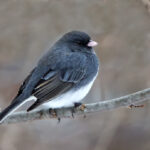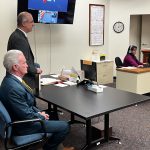The U.S. Pharmacopeia, a nonprofit that helps set quality standards for the pharmaceutical industry, has announced a new standard that guides companies wishing to transfer their testing for endotoxins away from the use of horseshoe crab blood to new synthetic recombinant agents that do not use the blood of a wild animal.
The new standard is a victory for an ancient species loved by many and valued by conservationists for its important role in preserving healthy ecosystems along the Atlantic Coast, according to the Horseshoe Crab Recovery Coalition, a group of more than 50 conservation and health-care organizations.
Horseshoe crabs are facing mounting pressures along the coast, according to the coalition. One of those pressures is their harvesting for their blue blood, which is used to create the Limulus amebocyte lysate test.
The crabs’ blue blood contains important immune cells that are exceptionally sensitive to endotoxins, which can cause a variety of serious health problems. When those cells meet invading bacteria containing endotoxin, they clot around it. Medical devices and injectable drugs are all tested for endotoxins to ensure safety.
Currently, most pharmaceutical companies use the Limulus amebocyte lysate test, which comes at a high cost to horseshoe crabs and coastal conservation.
“Shorebirds, including the federally threatened red knot, rely on horseshoe crab eggs during their migratory journeys that span thousands of miles each year,” said Annie Chester, policy director at the American Bird Conservancy. “Widespread adoption of synthetic alternatives by the biomedical industry can alleviate harvest pressures and conserve horseshoe crabs.”
The Delaware Bay beaches in Cape May County are part of the Atlantic Flyway and are one of the most vital migratory rest stops for the red knot, which flies 9,300 miles from south to north every spring and repeats the trip in reverse every autumn. The red knots rely heavily on the same stopping sites each year to refuel their bodies before reaching their breeding sites.
The relationship between the red knot and horseshoe crab has intertwined by evolution, as their arrival coincides with the annual horseshoe crab spawning in the Delaware Bay. The birds consume an abundance of horseshoe crab eggs as their main food source during migration.
“We are delighted that USP has provided guidance that will help place recombinant testing on equal footing with LAL,” said Larry Niles, co-founder of the Horseshoe Crab Recovery Coalition. “Recombinant testing provides a reliable, sustainable alternative that is critical to horseshoe crab conservation and a healthy ecosystem throughout the Atlantic Coast.”







